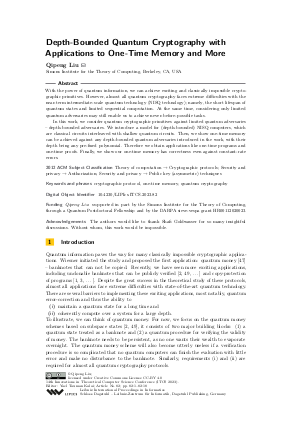LIPIcs.ITCS.2023.82.pdf
- Filesize: 0.7 MB
- 18 pages

 Creative Commons Attribution 4.0 International license
Creative Commons Attribution 4.0 International license





































Feedback for Dagstuhl Publishing